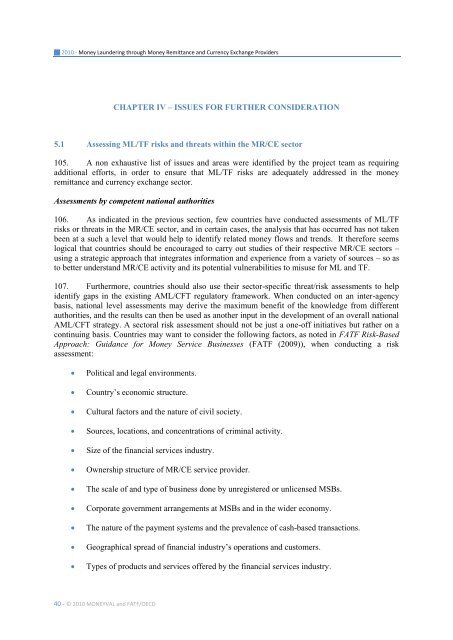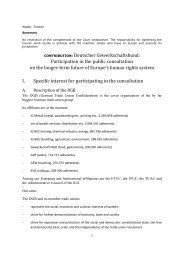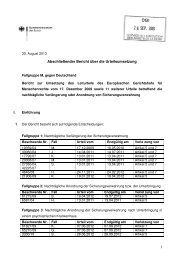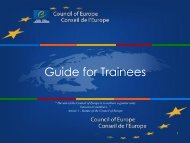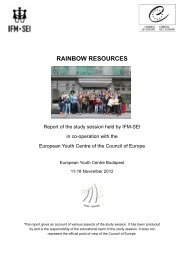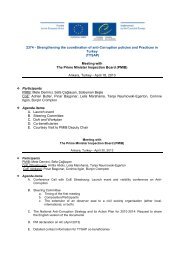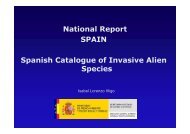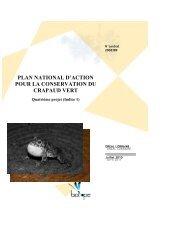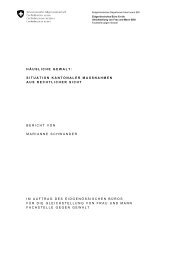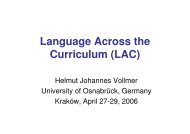Money laundering through money remittance ... - Council of Europe
Money laundering through money remittance ... - Council of Europe
Money laundering through money remittance ... - Council of Europe
You also want an ePaper? Increase the reach of your titles
YUMPU automatically turns print PDFs into web optimized ePapers that Google loves.
2010 - <strong>Money</strong> Laundering <strong>through</strong> <strong>Money</strong> Remittance and Currency Exchange Providers<br />
40 - © 2010 MONEYVAL and FATF/OECD<br />
CHAPTER IV – ISSUES FOR FURTHER CONSIDERATION<br />
5.1 Assessing ML/TF risks and threats within the MR/CE sector<br />
105. A non exhaustive list <strong>of</strong> issues and areas were identified by the project team as requiring<br />
additional efforts, in order to ensure that ML/TF risks are adequately addressed in the <strong>money</strong><br />
<strong>remittance</strong> and currency exchange sector.<br />
Assessments by competent national authorities<br />
106. As indicated in the previous section, few countries have conducted assessments <strong>of</strong> ML/TF<br />
risks or threats in the MR/CE sector, and in certain cases, the analysis that has occurred has not taken<br />
been at a such a level that would help to identify related <strong>money</strong> flows and trends. It therefore seems<br />
logical that countries should be encouraged to carry out studies <strong>of</strong> their respective MR/CE sectors –<br />
using a strategic approach that integrates information and experience from a variety <strong>of</strong> sources – so as<br />
to better understand MR/CE activity and its potential vulnerabilities to misuse for ML and TF.<br />
107. Furthermore, countries should also use their sector-specific threat/risk assessments to help<br />
identify gaps in the existing AML/CFT regulatory framework. When conducted on an inter-agency<br />
basis, national level assessments may derive the maximum benefit <strong>of</strong> the knowledge from different<br />
authorities, and the results can then be used as another input in the development <strong>of</strong> an overall national<br />
AML/CFT strategy. A sectoral risk assessment should not be just a one-<strong>of</strong>f initiatives but rather on a<br />
continuing basis. Countries may want to consider the following factors, as noted in FATF Risk-Based<br />
Approach: Guidance for <strong>Money</strong> Service Businesses (FATF (2009)), when conducting a risk<br />
assessment:<br />
Political and legal environments.<br />
Country‟s economic structure.<br />
Cultural factors and the nature <strong>of</strong> civil society.<br />
Sources, locations, and concentrations <strong>of</strong> criminal activity.<br />
Size <strong>of</strong> the financial services industry.<br />
Ownership structure <strong>of</strong> MR/CE service provider.<br />
The scale <strong>of</strong> and type <strong>of</strong> business done by unregistered or unlicensed MSBs.<br />
Corporate government arrangements at MSBs and in the wider economy.<br />
The nature <strong>of</strong> the payment systems and the prevalence <strong>of</strong> cash-based transactions.<br />
Geographical spread <strong>of</strong> financial industry‟s operations and customers.<br />
Types <strong>of</strong> products and services <strong>of</strong>fered by the financial services industry.


